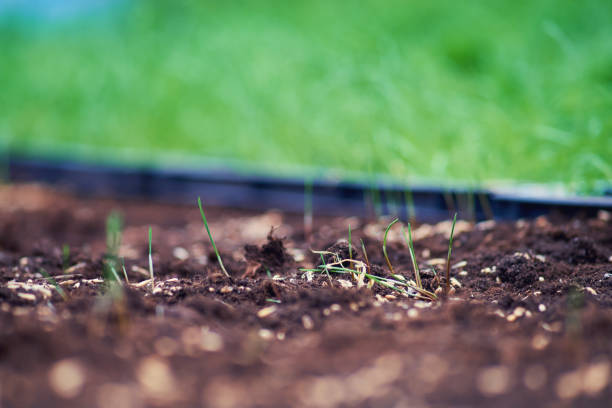As the winter frost thaws and the days gradually warm, your lawn wakes up from its dormancy. Giving your lawn a spring boost involves a series of key activities that can promote lush growth and enhance its overall health. This article delves into the best practices for rejuvenating your lawn, ensuring it thrives throughout the year.
1. Aerate Your Lawn

Aeration is the process of perforating the soil with small holes to allow air, water, and nutrients to penetrate the grassroots. This can be especially crucial after a long winter as it helps counter soil compaction. Using a core aerator, go over the lawn to remove small plugs of soil. This creates pathways for essential resources to reach deeper into the soil, encouraging root growth and improving the grass’s resilience to drought and heat. Aeration also helps reduce thatch, a layer of organic material that can suffocate the lawn if it becomes too thick.
2. Reseed Bare Patches
Winter can be harsh on your lawn, sometimes leaving behind bare or thin patches. Reseeding these areas in early spring will give them a chance to get established before the heat of summer sets in. Start by raking the area to remove dead grass and loosen the soil. Spread the grass seeds evenly and cover them with a thin layer of topsoil. Water the area lightly but consistently to keep the soil moist until the new grass is well-rooted. Using a seed spreader can help ensure even coverage, which is critical for uniform growth.
3. Apply Fertilizers and Soil Amendments
Spring is the ideal time to nourish your lawn with the essential nutrients it needs to grow strong and vibrant. Begin by conducting a soil test to understand what nutrients your lawn lacks. Based on the results, apply a balanced fertilizer rich in nitrogen, phosphorus, and potassium. Consider using slow-release fertilizers that feed the lawn over an extended period. Additionally, you may need to add soil amendments like lime or sulfur to correct pH imbalances. Proper fertilization not only promotes lush growth but also boosts the lawn’s resistance to diseases and pests.
4. Mowing and Maintenance Tips
Proper mowing practices are vital for maintaining a healthy lawn. Set your mower to the highest cutting height to encourage deeper root growth and shade the soil, reducing weed growth. Only remove the top one-third of the grass blade at a time to avoid stressing the plant. Keep your mower blades sharp to ensure clean cuts that heal quickly. Regular mowing also helps to maintain an even appearance and prevents the grass from becoming too long, which can harbor pests and diseases. Be sure to vary your mowing pattern each time to prevent soil compaction and uneven wear on the grass.
Spring Lawn Care Checklist
- Aerate the soil to improve airflow and nutrient absorption
- Reseed bare patches for uniform growth
- Apply a balanced, slow-release fertilizer
- Adjust pH levels with soil amendments if necessary
- Mow regularly at the correct height
5. Watering Practices
Proper watering is essential to giving your lawn a strong start in spring. Begin by watering deeply but infrequently, which encourages roots to grow downward and become more drought-tolerant. The best time to water is in the early morning, allowing the grass to dry out during the day and reducing the risk of fungal diseases. Use a sprinkler or irrigation system that distributes water evenly across your lawn. Avoid overwatering, as this can lead to shallow roots and increased susceptibility to pests and diseases. Monitoring weather conditions can help you adjust your watering schedule as needed to maintain optimal soil moisture levels.
Conclusion
Giving your lawn a spring boost requires a combination of aeration, reseeding, fertilizing, proper mowing, and efficient watering practices. By following these guidelines, you can promote a lush, healthy lawn that thrives throughout the year. Dedicate some time and effort in the early months of spring to set your lawn up for success, and you’ll enjoy a beautiful, green landscape all season long.
FAQs
1. When is the best time to aerate my lawn?
The best time to aerate your lawn is in early spring or fall when the temperatures are cooler, and the grass is actively growing.
2. How often should I water my lawn in the spring?
You should water your lawn deeply once or twice a week in the spring, depending on rainfall and soil moisture levels.
3. What type of fertilizer should I use for my lawn in the spring?
Use a balanced, slow-release fertilizer that contains nitrogen, phosphorus, and potassium to provide essential nutrients over an extended period.
4. Can I mow my lawn too early in the spring?
It’s best to wait until your lawn starts to actively grow before mowing. Mowing too early can stress the grass and hinder its recovery from winter dormancy.
5. How can I tell if my lawn needs reseeding?
If you notice bare or thin patches in your lawn after winter, it’s a good sign that those areas need reseeding to encourage uniform growth.
